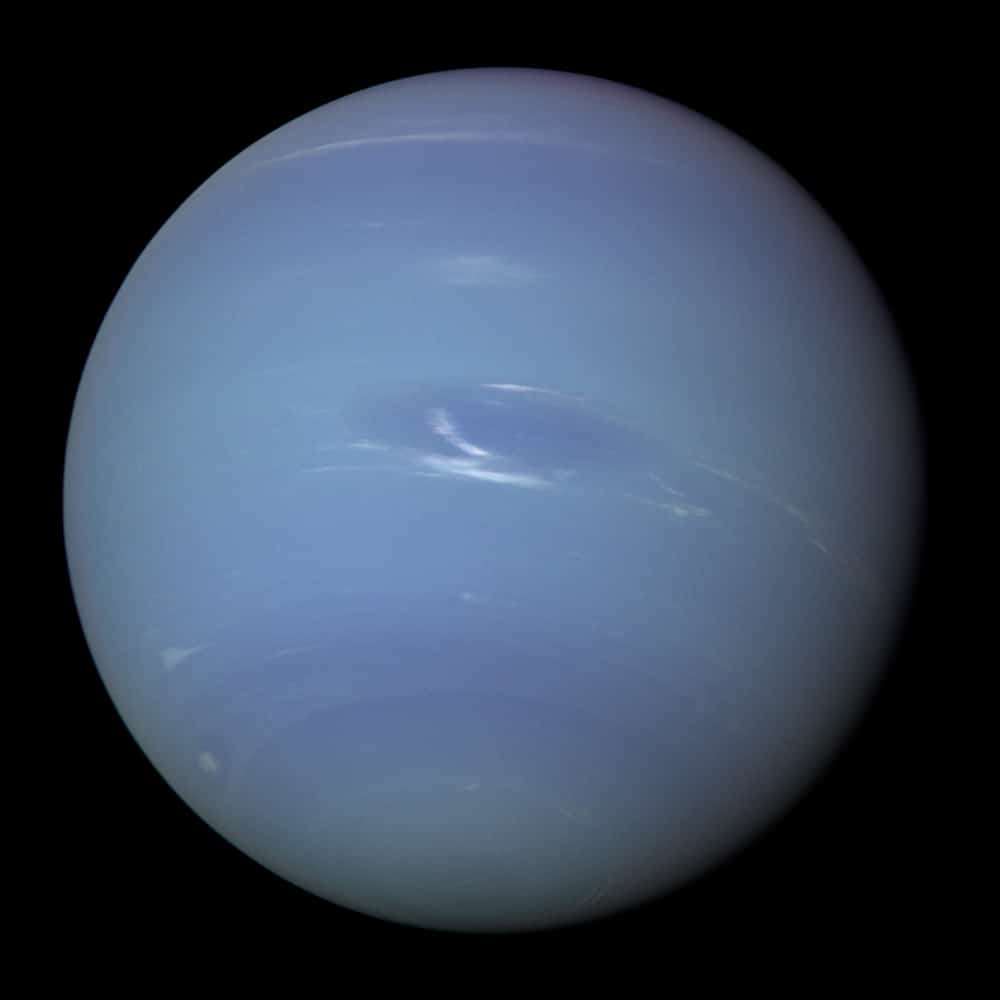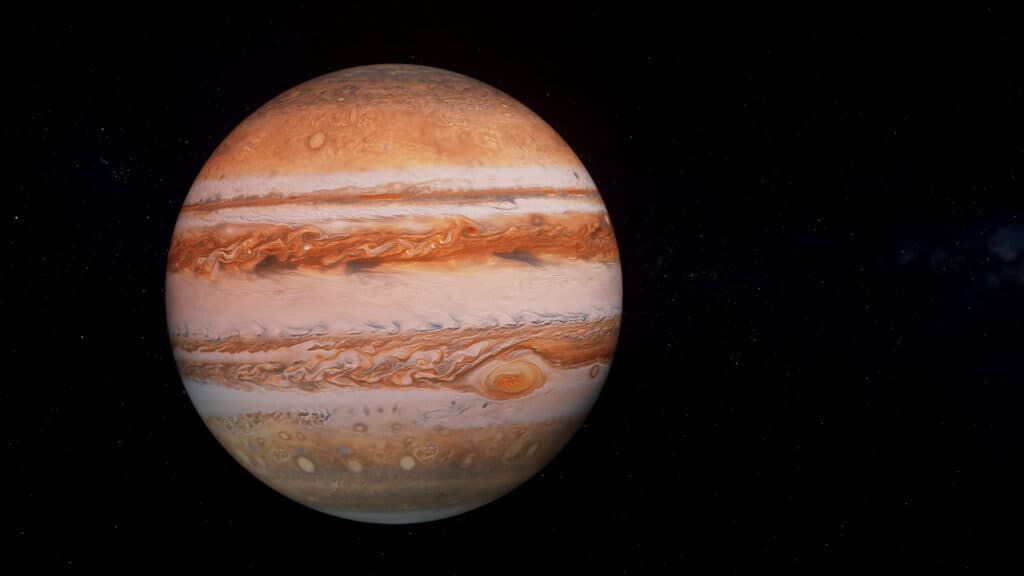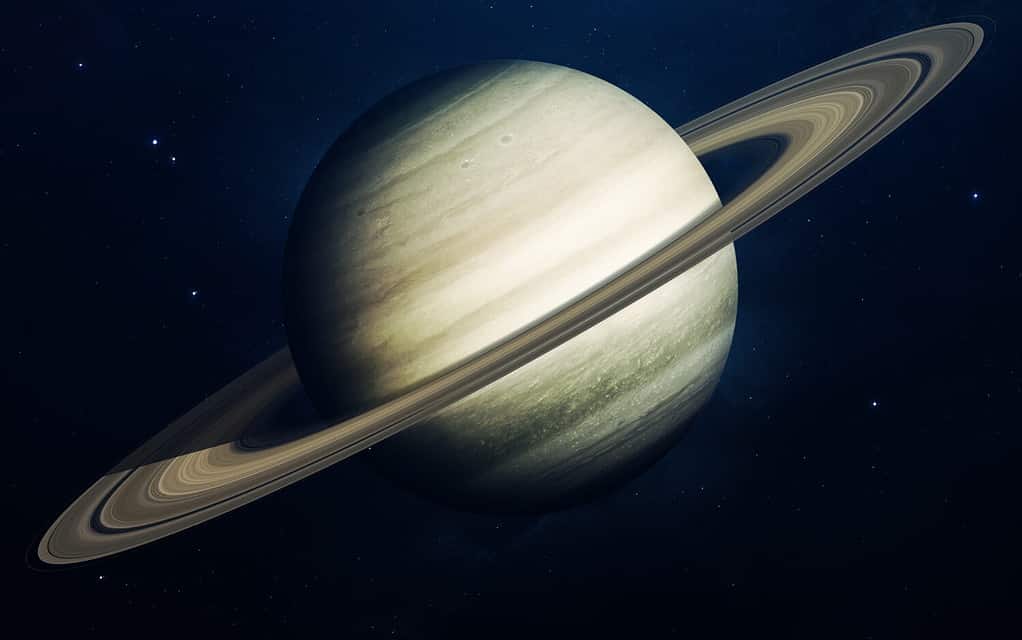On Earth, all precipitation is water. However, that isn’t the case on other planets. We’ll discover why astronomers believe it rains diamonds on Neptune… yes, diamonds!
Defining the Planet Neptune

The last planet in our Solar System is an icy planet named Neptune.
©Justin Cowart / public domain – Original
Neptune is the eighth planet in our solar system. It is also the last planet orbiting our sun. It is much different than Earth, and as a result, things that happen on that planet do not happen on our home planet.
Most of what we know about Neptune is conjecture. Only Voyager 2 has whizzed by the planet, and that was about 40 years ago. The hard facts about Neptune remain elusive, and what we believe today are educated guesses.
How Astronomers Define Neptune’s Ice
Neptune is an ice planet, however, this doesn’t mean that it’s made of ice. Astronomers use the word ice to refer to some things that contain hydrogen. In the case of Neptune, the icy bits are methane, ammonia, and water.
The huge icy layer of Neptune below its thin hydrogen and helium atmosphere is not cold. While its thin top layer of atmosphere is probably below negative 400 degrees Fahrenheit, its very thick icy layer is much hotter. This ice layer is most likely way more than 1000 degrees Fahrenheit, and it’s probably a liquid that can’t evaporate because pressure keeps it jammed between the core and the atmosphere.
Neptune’s Dense Core
The planet Neptune has a super dense inner core which isn’t surprising considering it’s the densest planet in our Solar System. This core is made of silicates and metals in the form of rocks, and it’s a little bigger than Earth.
While it’s easiest to describe this core as solid, it isn’t. It’s a supercritical liquid.
This means that the liquids and gasses of the core are compressed and heated to such a point that they are neither a liquid nor a gas. Instead, they are a very thick substance with the properties of both states of matter.
The Composition of Neptune’s Atmosphere

Methane in the atmosphere causes Neptune to appear blue.
©vchal/iStock via Getty Images
Neptune appears blue because its atmosphere is mostly composed of methane. As the sun interacts with this methane atmosphere, it breaks down this complex hydrocarbon into smaller hydrocarbons. A hydrocarbon is a chain of bonded atoms made of carbon and hydrogen.
As the hydrocarbons in the atmosphere continue to break down due to increased pressure and temperature, they dissociate into hydrogen and carbon. As heat and pressure continue to ramp up, diamonds are created from isolated carbon. While hydrocarbons can be enough to create precipitating diamonds, the reaction that creates them is probably enhanced by the presence of oxygen in the atmosphere.
Discovering What Forms a Diamond

Immense pressure and heat are needed to create diamonds.
©Bjoern Wylezich/Shutterstock.com
Diamonds are in stars, planets, and meteorites, and they may be the first mineral ever created. They are not nearly as rare outside of Earth as they are on our planet. Therefore, it’s not farfetched for astronomers to believe it rains diamonds on Neptune.
That’s because the processes that create diamonds happen with more frequency off of our planet than on it. It takes intense pressure and heat against pure carbon to create diamonds. The process requires at least 2000 degrees Fahrenheit and 725 thousand pounds of pressure per square inch to form a diamond.
On Earth, diamonds form in the mantle where they’re compressed into existence over billions of years until they’re ejected by volcanic activity to the surface. Extraterrestrial phenomena can create sufficiently immense temperatures and pressures in ways that don’t require the rarity of circumstance that is needed on our planet.
Why Astronomers Believe It Rains Diamonds on Neptune
There is so much pressure in the atmosphere of Neptune that it may make diamonds by crushing carbon atoms. Because the atmosphere may be crushing carbon, this is why astronomers believe it rains diamonds on Neptune.
The pressure is caused by the immense pressure that gravity puts on the atoms in the large icy layer above the planet’s core. This diamond-creating gravitation pressure is probably 1 million times stronger than Earth’s atmospheric pressure.
After passing through Neptune’s atmosphere and traveling 6200 miles toward the core through its icy layer, the heat and pressure become so great that diamonds may be formed. From there, the diamonds continue to fall into the interior of the planet, and this falling is what is considered precipitating diamonds.
Astronomers Think There Might Be Diamond Bergs on Neptune
There may be huge iceberg-sized diamonds floating around in carbon on Neptune. The precipitating diamonds created on Neptune may weigh millions of carats, and there are a lot of these huge diamonds falling deeper into Neptune as rain. Since Neptune’s core is buried under layers of ice and liquid, these diamonds may spend thousands of years sinking before settling into a layer surrounding the planet’s solid core.
However, the extreme heat around the core may keep some of this carbon in liquid form. If there is liquid carbon around Neptune’s core, then there are most likely solid diamond chunks floating around in this liquid.
What Other Planets Rain Diamonds?
Neptune isn’t the only planet in existence that rains diamonds. Other planets both in and out of our solar system probably rain diamonds. The planets in our Solar System that astronomers believe rain diamonds are Uranus, Jupiter, and Saturn.
Astronomers Think Uranus Rains Diamonds

It may rain diamonds on Uranus in the same way that they rain on Neptune.
©iStock.com/IncrediVFX
Uranus is another ice planet in our solar system, and it may rain diamonds on Uranus as well. Like Neptune, Uranus has an atmosphere that is predominantly methane. The way that diamonds precipitate on Uranus is the same process that creates diamond rain on Neptune.
Astronomers Think Jupiter Rains Diamonds

Diamond rain may fall on Jupiter.
©iStock.com/Cobalt88
Jupiter may also experience diamond rain. Lightning in Jupiter’s atmosphere may turn methane into soot made from carbon.
As this soot falls and compresses farther down Jupiter’s atmosphere, it hardens into graphite. This graphite-creating free fall occurs for about 1000 miles. As the pressure increases as the graphite keeps falling another 3700 miles, it may become diamonds.
Astronomers Think Saturn Rains Diamonds

Saturn rains diamonds in the same way as Jupiter.
©Vadim Sadovski/Shutterstock.com
There is evidence that diamond precipitation occurs on Saturn in the same way that it happens on Jupiter. While these diamonds would be visible to the naked eye, they would only be about .2 inches in diameter.
This is a stark contrast to the huge diamonds possible on Neptune and Uranus. Despite this, it’s believed that more than 1000 tons of diamonds act like rain inside Saturn.
The photo featured at the top of this post is © iStock.com/PandaWild
Thank you for reading! Have some feedback for us? Contact the AZ Animals editorial team.







